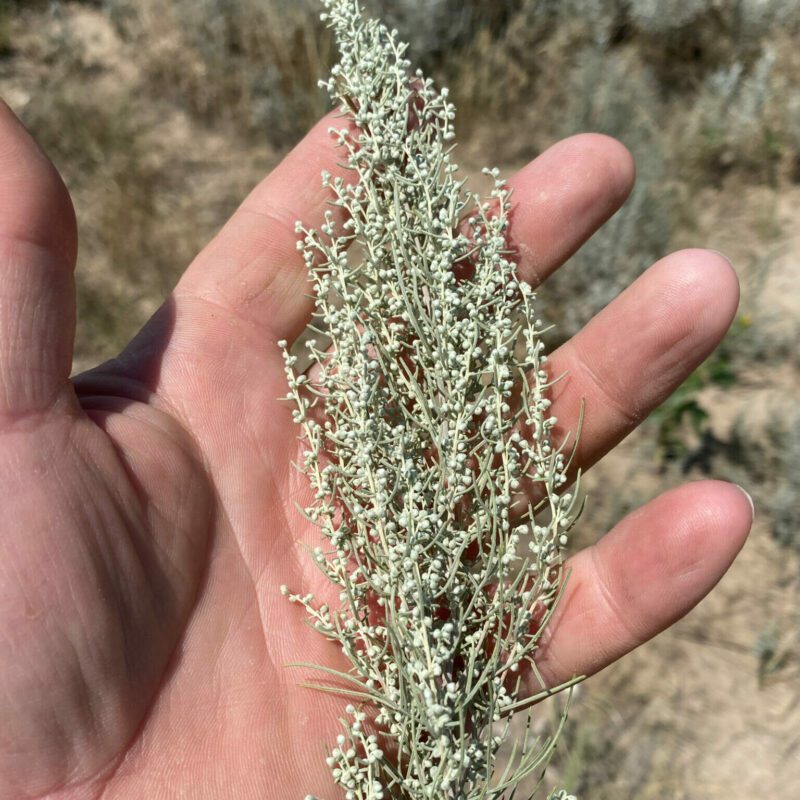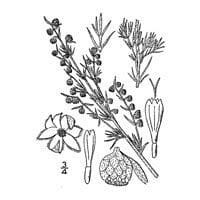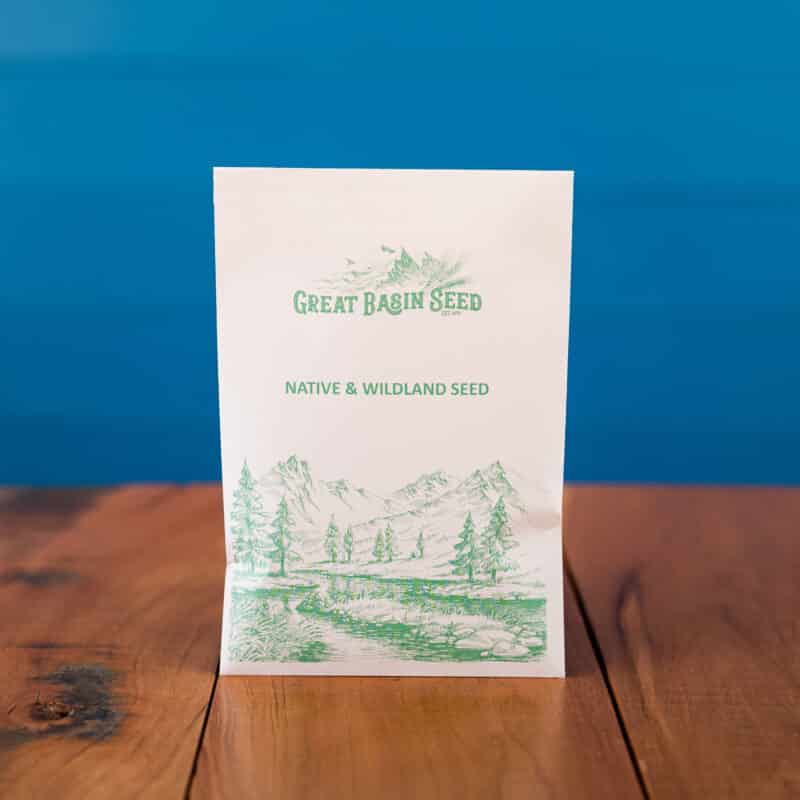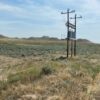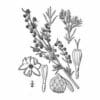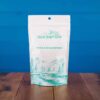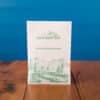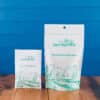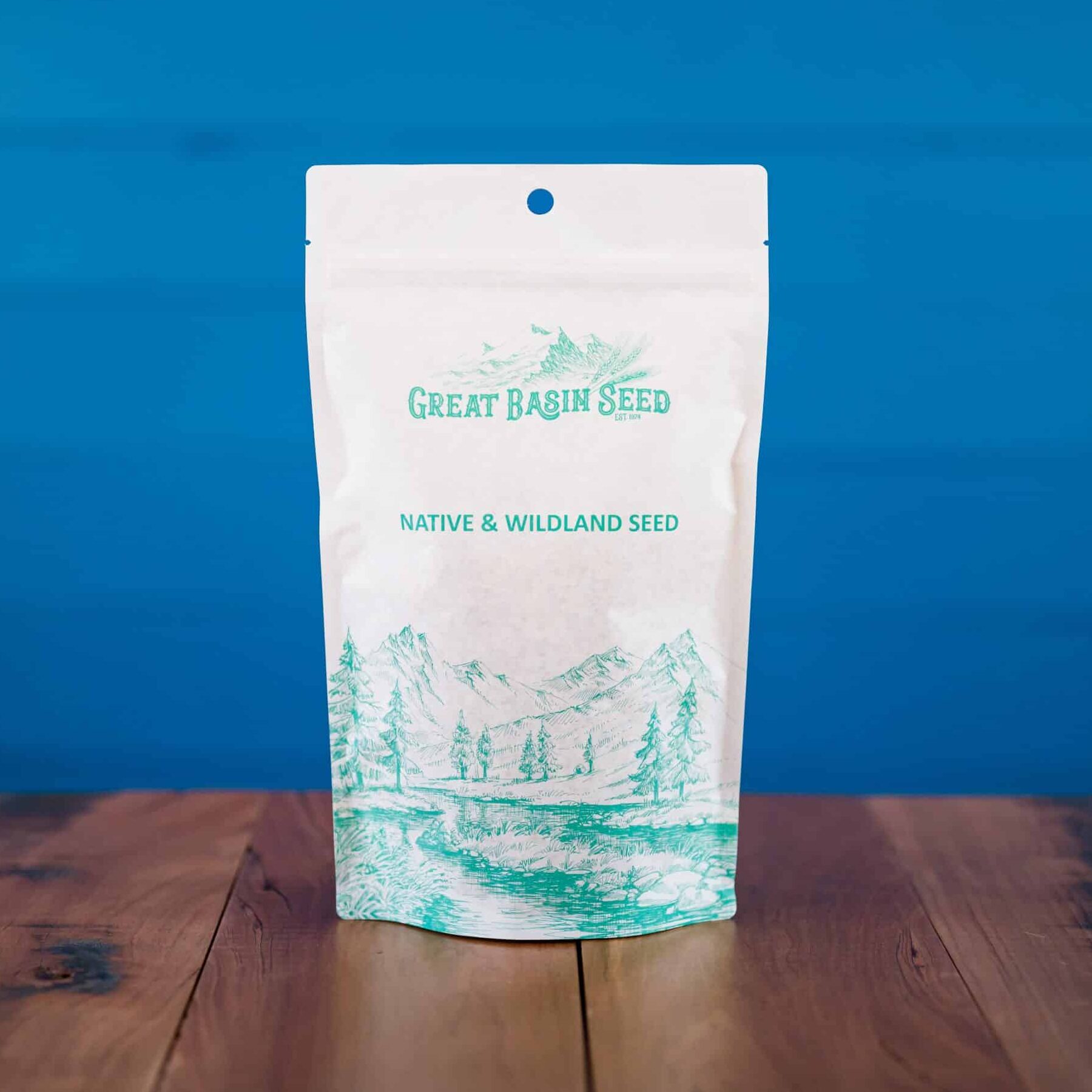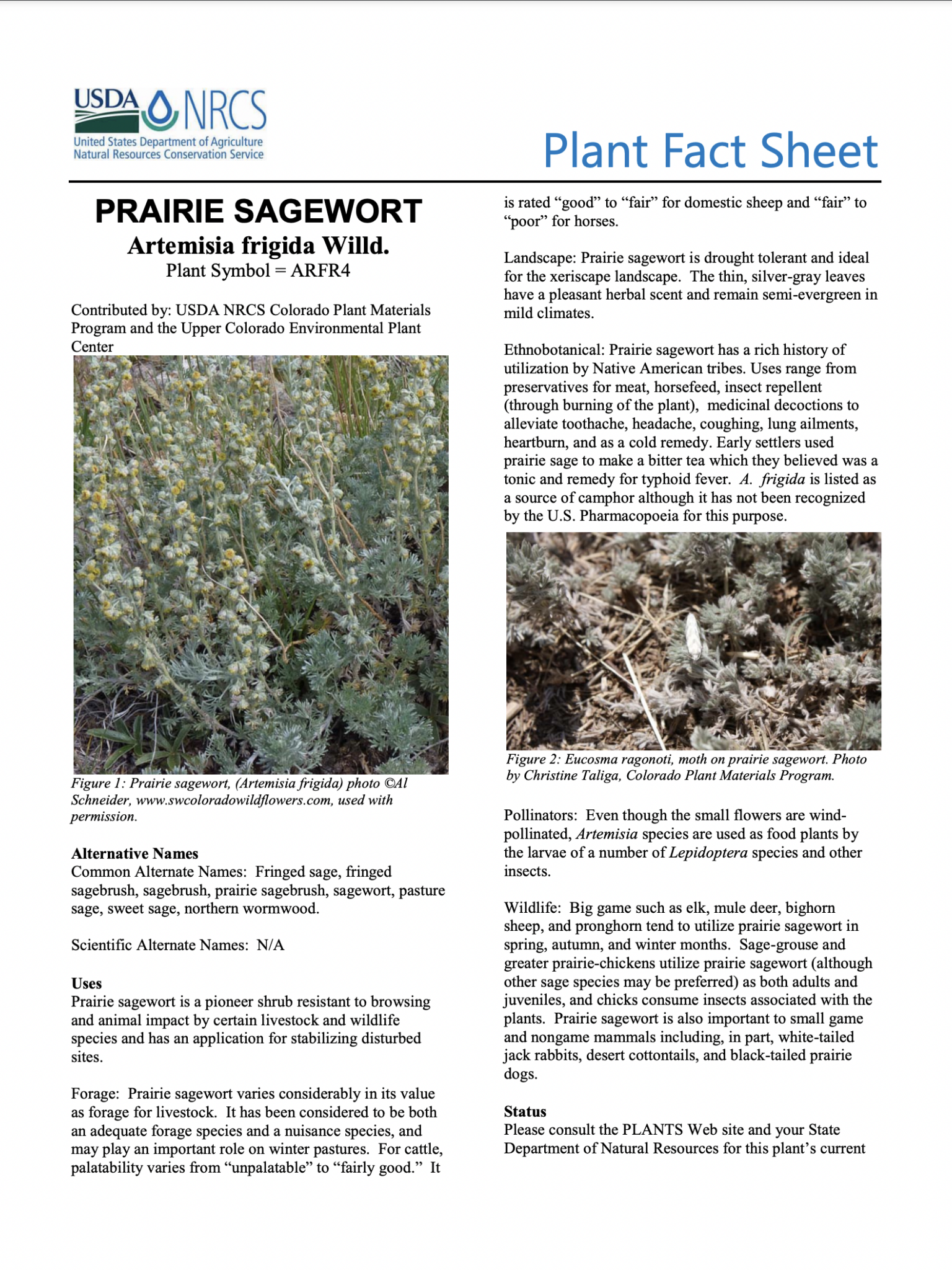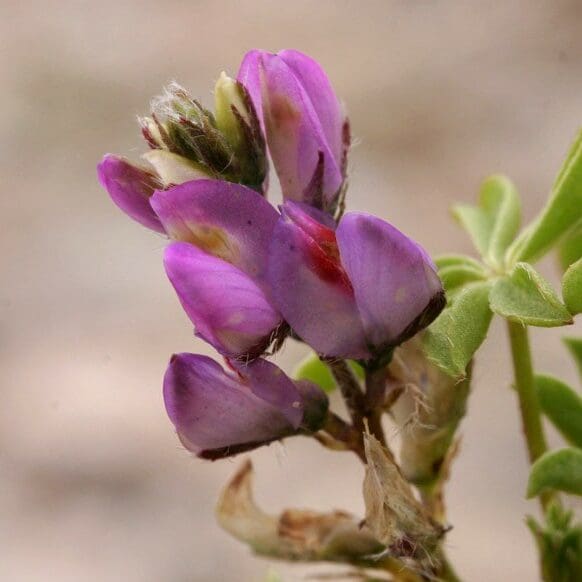Fringed Sage (Artemisia frigida), also known as Prairie Sagewort, is an attractive, mat-forming sub-shrub, with grey-green velvety foliage. Occurring from 3,000 to 8,000 feet elevation, often on thin, dry soils. It demonstrates fair palatability to livestock and good for wildlife. It blooms in the fall.
Fringed Sage (Artemisia frigida) is useful for landscaping. It is drought tolerant and ideal for the xeriscape landscape. The thin, silver-gray leaves have a pleasant herbal scent and remain semi-evergreen in mild climates.
Prairie sagewort is a pioneer shrub resistant to browsing and animal impact by certain livestock and wildlife species and has an application for stabilizing disturbed sites.It’s value varies considerably for livestock use. It has been considered to be both an adequate forage species and a nuisance species, and may play an important role on winter pastures. For cattle, palatability varies from “unpalatable” to “fairly good.”
Even though the small flowers are wind- pollinated, Artemisia species are used as food plants by a number of insects.
Big game such as elk, mule deer, bighorn sheep, and pronghorn tend to utilize Fringed Sagebrush in spring, autumn, and winter months. Sage-grouse and greater prairie-chickens utilize prairie sagewort (although other sage species may be preferred) as both adults and juveniles, and chicks consume insects associated with the plants. Prairie sagewort is also important to small game and nongame mammals including, in part, white-tailed jack rabbits, desert cottontails, and black-tailed prairie dogs.
Fringed Sage NRCS Plant Fact Sheet
Fringed Sage NRCS Plant Fact Sheet
PDF version of NRCS Prairie Sagewort Plant Guide
Prepared By: Christine Taliga; Plant Materials Specialist, Denver, Colorado.
Steve Parr; Manager, Upper Colorado Environmental Plant Center, Meeker, Colorado.
Helpful Links
Additional information about this product can be found on the academic websites linked below.
Synonyms
Many plants have more than one common and scientific name. We've listed a few of them below.
- Fringed Sage
- Artemisia frigida
- Prairie Sagewort
Who is Great Basin Seed?
Great Basin Seed is a seed company that specializes in seed sales and consultation for home, ranch, farm, range and reclamation. We have been a leader in the seed industry since 1974.
Our History
We've been in the seed business since 1974.
What We Offer
We offer seed for home, farm, ranch, range and reclamation projects.
Meet the Gang
We have the best employees in the world! We are proud of the work they do, and trust them to serve you!
Right: Company founder Lloyd and his wife Paula Stevens in a wildflower seed production field circa 1977
Quick Plant Facts
| Common Name: | Fringed Sagebrush, Pasture Sage, Praire Sagebrush |
|---|---|
| Scientific Name: | |
| Lifespan: | |
| Origin: | |
| Plant Type: | |
| Seed Count | 4536000 |
| Growth Height: | |
| Root Form | Rhizomatous |
| Planting Rate: | |
| Min. Precipitation | 8 Inches Minimum |
| Best Time to Sow: | |
| Growth Season: | |
| Sun & Shade Tolerance: | Full sun, tolerates shade |
| Elevation of Occurance: | |
| Zone Map | comingsoon.gif |
| Select a Package Size and Quantity | 1 oz. Envelope, 4 oz. Pouch (0.25 lbs.), 8 oz. Pouch (0.50 lbs.), 1 lb. (by the pound) |
